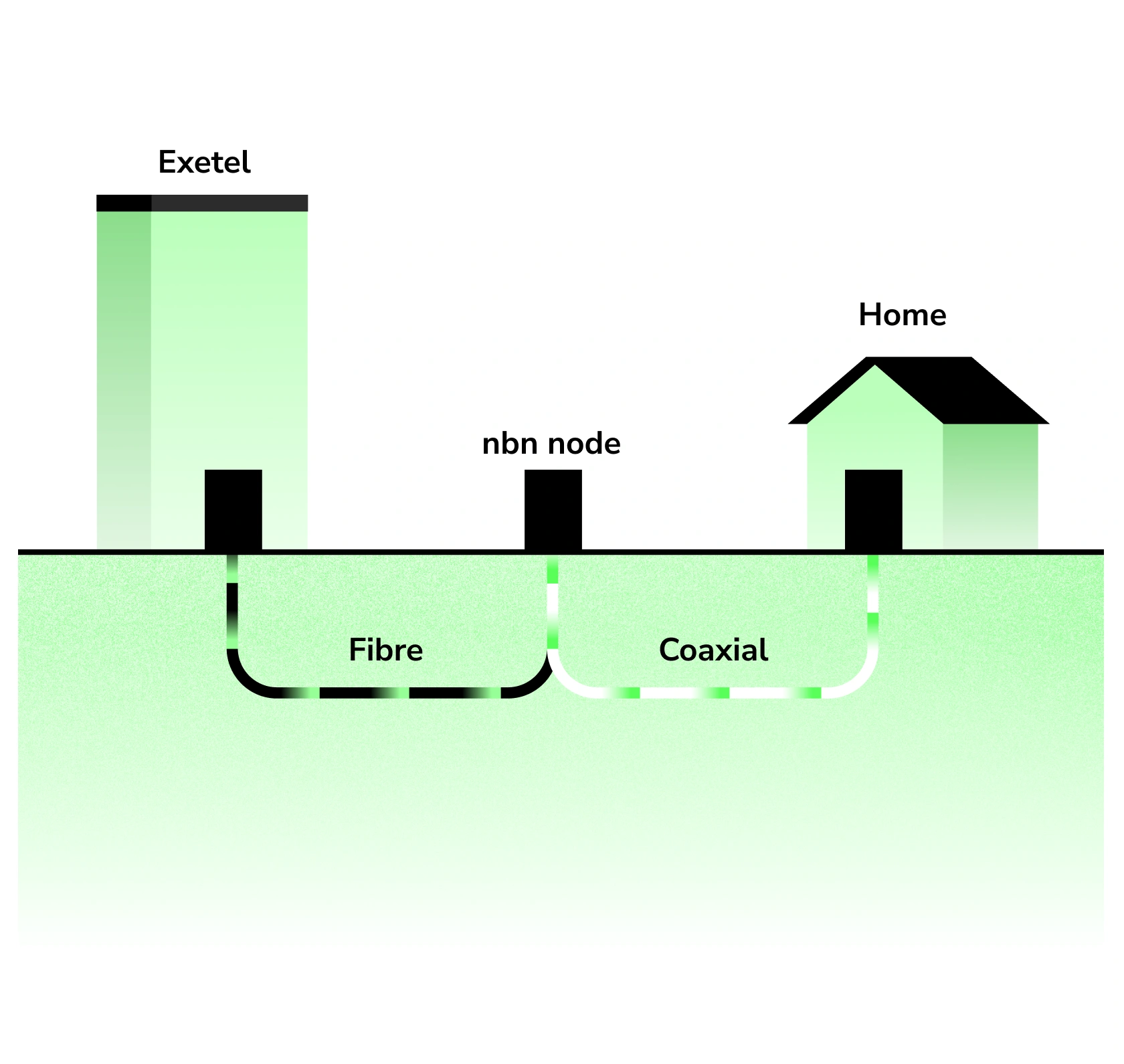Incompatible Devices - Emergency Calling (000) Update - more info here.
THE LOWDOWN ON HFC
Everything you need to know about Hybrid Fibre Coaxial (HFC)
What is HFC?
HFC stands for Hybrid Fibre Coaxial, a type of broadband internet connection that combines fibre optic and coaxial cables to deliver fast internet speeds. HFC is part of Australia's nbn (National Broadband Network) rollout, bringing high-speed internet to homes and businesses. HFC connections use fibre optic cables to deliver the internet signal to a local node, which is then transmitted via coaxial cables to your premises. This setup allows for reliable, high-speed internet without the need for extensive infrastructure changes, making it an efficient and cost-effective solution for many users.


Benefits of HFC
HFC connections are designed to offer reliable internet speeds and great performance for both casual browsing and high-demand activities like gaming and streaming. It’s an upgrade from older broadband technologies, such as ADSL, which is generally faster and more stable.
There are several key benefits of an HFC connection:
nbn HFC can deliver speeds that cater to a wide range of online activities, including streaming HD videos, video conferencing, and online gaming. Depending on your plan, you can expect speeds ranging from 25Mbps to 1000Mbps or even higher.
HFC offers a more reliable connection compared to older technologies like ADSL. It’s less prone to interference and outages, making it a solid choice for consistent performance.
Since HFC uses a combination of fibre optic and coaxial cables, it doesn’t require as much new infrastructure to be installed compared to full Fibre to the Premises (FTTP) solutions. This means a quicker setup and lower installation costs.
HFC is available in many areas across Australia, providing more access to high-speed internet for residents and businesses that may not yet be covered by FTTP or other technologies.
With HFC, there are a variety of speed tiers to suit your needs, from more budget-friendly options to ultra-fast plans, ensuring that you can get the right connection for your lifestyle.
Everything you need to know
Find the answers to frequently asked questions.
What is HFC?
Is there any difference between HFC and FTTP?
What are the differences between HFC, FTTC and FTTN?
Which routers are compatible with HFC?
Is there any cost for HFC installation?
Why is HFC more expensive than FTTC and FTTN?
Does HFC need a phone line?
© Copyright 2025 Exetel Pty Ltd. All rights reserved.